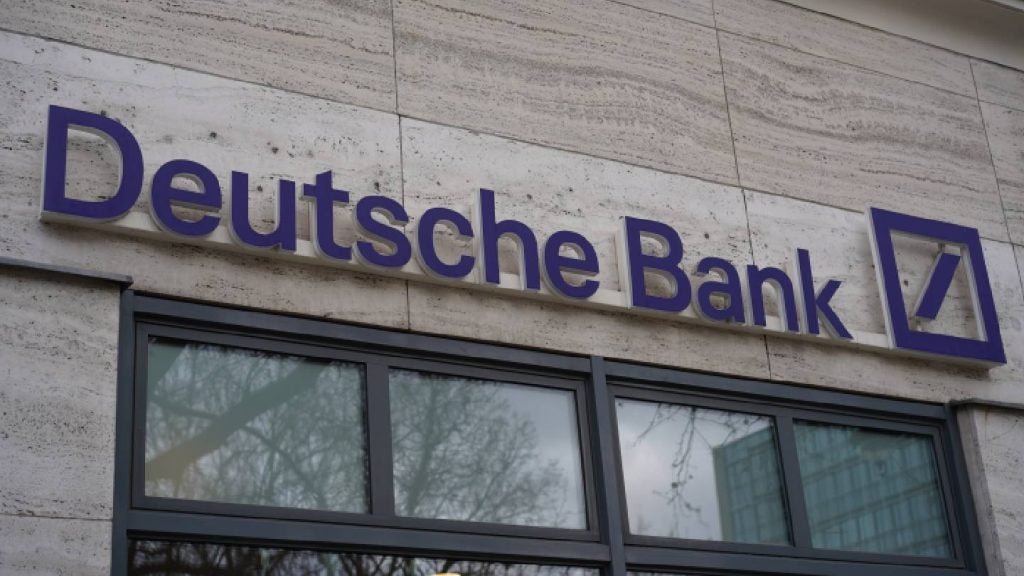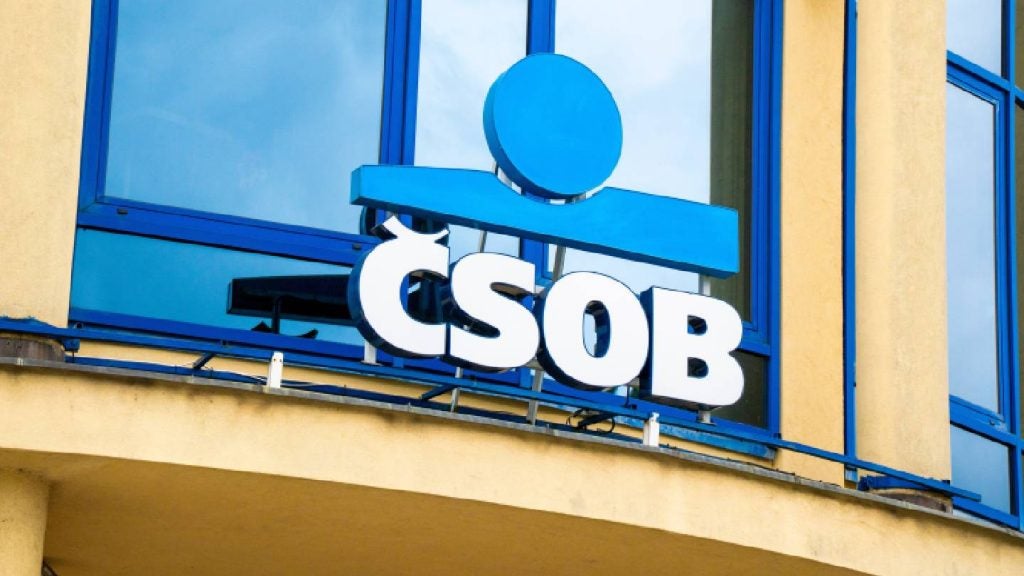EY’s Global Banking & Capital Markets Leader, Jan Bellens, discusses with Douglas Blakey how the banking sector will respond to a pandemic-related recession and why divestments are a core pillar of the banking sector’s resilience and growth strategy
Many banks, insurers, wealth and asset managers will need to take decisive action now to strengthen balance sheets, ensure liquidity and reposition their business to endure the current Covid crisis and seize growth opportunities as they emerge from the pandemic.

Access deeper industry intelligence
Experience unmatched clarity with a single platform that combines unique data, AI, and human expertise.
To achieve this, firms will take different approaches for different reasons. But a core pillar across industries should involve portfolio optimisation and increased divestment activity as strategic imperatives for firms as they seek to withstand the impact of a global recession and better position their business for a new operating paradigm once growth and stability returns to the global economy. This is the key takeaway in EY’s Global Corporate Divestment Study.
While firms’ immediate priorities are raising capital to bolster balance sheets, 70% of bankers surveyed by EY say that a reshaping of their portfolio for a post-crisis world was one of the key actions they would need to take in response to the potential impact of the pandemic on their business.
What’s more, intentions to divest were high going into the crisis; they have since risen significantly. Indeed, some 85% of financial services firms say they expect to initiate their next divestment within the next two years, up from 72% that said the same pre-crisis.
Westpac divestment strategy gathers pace
Strikingly, most (58%) of these firms said they planned to divest assets in the next 12 months.

US Tariffs are shifting - will you react or anticipate?
Don’t let policy changes catch you off guard. Stay proactive with real-time data and expert analysis.
By GlobalDataWestpac in Australia, is one such example that will no attract the attention of the banking press in the third quarter. Last September, long before the business world was facing the Covid challenge, Westpac was linked with the sale of its life insurance business.
After all, rivals ANZ sold its life insurance arm to Zurich Insurance in 2017, followed by the 2018 sale by CBA of its own life insurance unit to AIA. National Australia Bank got in on the act by selling a majority stake in its life insurance business to Nippon Life.
Fast forward to the second half of 2020 and Westpac is looking at a major disposals programme.
The A$1.5bn life insurance arm is up for sale through JPMorgan. Other business units potentially on the block include more than A$4bn worth of non-core wealth assets.
For example, Westpac may sell off its dealer finance and automotive loans portfolio.Meantime, analysts estimate that Westpac’s wealth platform could fetch up to about A$1bn.It seems a safeish bet to forecast that the major global private equity funds will be prominent among the bidders.
EY’s report notes that a number of the most successful deals arising from the last financial crisis were led by private equity.
Private equity sector will be active
The PE sector will be looking very actively at embedded businesses in banks such as the wealth and asset management, asset servicing, insurance and payments businesses. But EY suggests it will also be eyeing up the software, technology and regtech sectors where the banks are the major user groups and, in some cases, still the owners of these assets.
And the Australian banks may well blaze something of a trail in divestments with Westpac’s peers NAB and CBA also looking to dispose of non-core assets.
Specifically, NAB is selling its wealth management operation while CBA is disposing of its general insurance unit.
According to EY, firms selling non-core assets will invest in their core business and, crucially, enhance the technology infrastructure supporting it.
Tech investments and war chests for acquisitions
Close to half (48%) of firms in April said they are more likely to divest to fund new technology investments, up from 30% that said the same pre-crisis. In addition, financial firms are looking to grow their war chests for strategic, step-change acquisitions or acquisitions that support their transformation agenda, which itself has been accelerated by the enduring impacts of the pandemic.
Across financial services, such strong intent to divest is notable, not only highlighting how divestitures are a strategic imperative for firms as they build financial resilience and optionality now, but also as they think about what’s next and beyond.
Some 51% of banks say they are now also more likely to dispose of business units delivering — or expected to deliver — suboptimal returns on capital, and, in extreme situations, distressed assets.
Indeed, most (41%) expect to see an increase in distressed asset sales over the next 12 months. This will, in turn, present investment opportunities to buyers leading to unsolicited approaches — 49% of banks expect to see an increase in this activity compared to 34% pre-crisis — from within the industry and outside. Some 43% expect to see an increase in the number of buyers outside the seller’s sector.
How can banks better prepare their divestments?
With execution and active marketing of large assets still mostly on hold, the focus has turned to reviewing portfolios and, according to 49% of banks, continuing their divestment preparation.
Dedicating adequate time and resources to this process is important. Unfortunately says EY, it is often overlooked; close to two thirds (64%) admit they significantly underestimate the internal resources and time needed to prepare an asset for sale – the highest percentage across the financial services sector.
Jan Bellens, EY’s Global Banking & Capital Markets Leader, tells RBI that banks need to take the initiative in their divestment strategy.
“Overall, we see more success in proactive vs reactive transactions in terms of execution as they permit more time to engage the right parties in a thoughtful manner. The Divestment Study shows that 66% of banking and capital markets executives agree that they should have invested more time and resources into creating pre-sale value on their most recent divestment.
“We are already seeing banks taking steps towards more proactive divestment with three key responses from banking and capital markets executives:
- 90% saying that they review their portfolio more frequently and in greater depth than previous years;
- 70% saying they will need to reshape their portfolio to prepare for a post-Covid world; and
- 66% of respondents said they continue to hold onto assets too long.”
Price gap between sellers and buyers
In a market where the price gap between sellers and buyers is already wide, and could potentially widen further, the importance for sellers of preparing their divestments in the right way to achieve the highest possible price should not be underestimated.
Indeed, sellers will most likely need to face the reality that they are unlikely to achieve pre-Covid pricing in the near term. Recognition and acceptance of the new pricing dynamics could, therefore, be critical for divestment activity to increase.
The report notes that the top two areas where banks are now placing greater focus before putting the business up for sale are: ensuring the quality of the management team in the business (49%); and optimising the asset’s legal structure (41%), which could mean separating it partially or fully.
Of various restructuring approaches being considered in the middle or back office, most (54%) say they may carve out capabilities (employees, assets, infrastructure) and transfer them to a managed service provider; and collaborate with industry or market peers to form a shared capability or utility.
Regional variations?
Asked about possible regional variations, Bellens says EY is seeing disruption across the whole industry. But he adds that it is more acute in regions more adversely impacted by Covid.
“Despite this, there are still many strategic M&A conversations going on within boardrooms as banks look to position themselves for future growth. The full effects of COVID-19 have not yet been felt as foreclosures have been halted, with tough business decisions ahead as the virus continues to spread, which will likely result in a trickle-down effect forcing banks to critically look at segments of their business that contribute to the bottom line.”
Activist investors will be ambitious and will be back
Activists will return to agitate for change. Activist campaign activity has been impacted by the crisis but they will return to focus attention on the banking sector and in specific situations where underperformance and poor management during the pandemic exist. That most banks (57%) say they are less likely to divest due to activist pressure in the next 12 months is perhaps indicative of activist campaign activity slowing as they themselves navigate the impact of financial and economic impact of the pandemic.
However, activists will be back and perhaps more ambitious than before. Activists’ investment rationale can differ from one target firm to the next. Yet agitating for a divestment of a non-core or underperforming business, or even a breakup, have been core objectives.
Bellens adds: “There are certainly opportunities out there for activist investors to agitate for a divestment of a noncore or underperforming business, or even a breakup. However, banks are also reviewing their portfolios more often and in greater depth. Historically, we have seen more activist pressure in the UK and Europe, and whilst I would not rule out more activism in the US it’s not something we are seeing at the moment.”
ECB green light for more M&A activity
As for potential full-blown acquisitions, July kicked off with the news that the European Central Bank will do more to encourage M&A activity. The ECB is so keen to accelerate mergers within the fragmented banking sector it will now recognise the accounting gain that can be generated when a bank snaps up a rival for less than the fair value of its assets minus liabilities.
Moreover, the ECB says that it will not now automatically insist on higher capital requirements on banks that merge. But will the ECB’s relaxed supervisory stance kick-start M&As?
Bellens concludes: “A couple of months ago I would have said that we were looking for an uptick in M&A in H220. However, this looks like it might be pushed back to early 2021.
“The underlying market dynamics supporting a robust deal environment remain strong so we’d expect to see some opportunistic M&A in 2020, that could well spur even more activity.”







